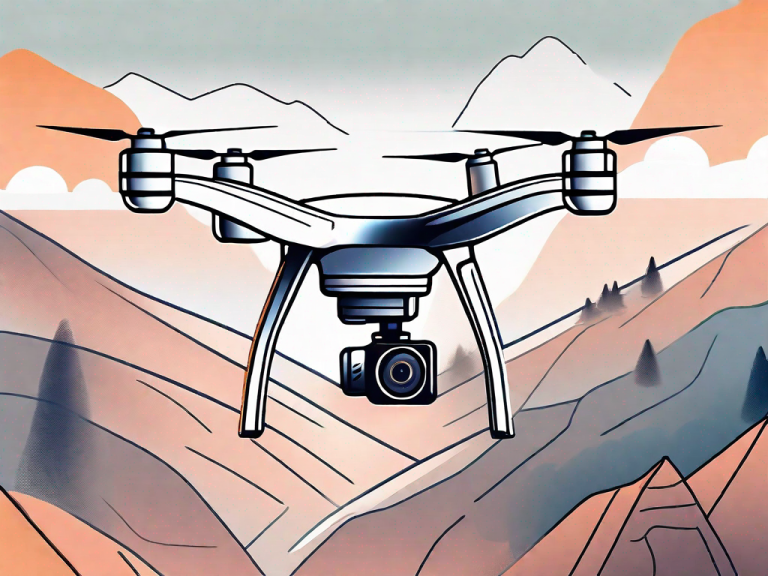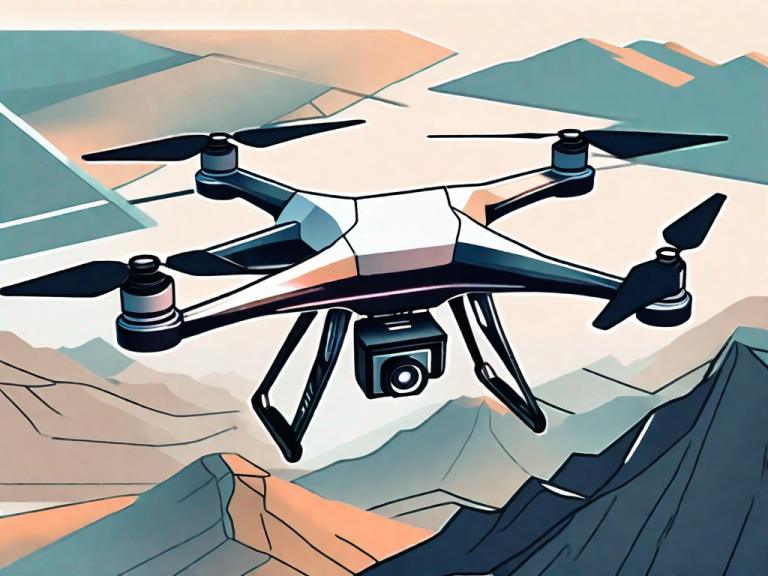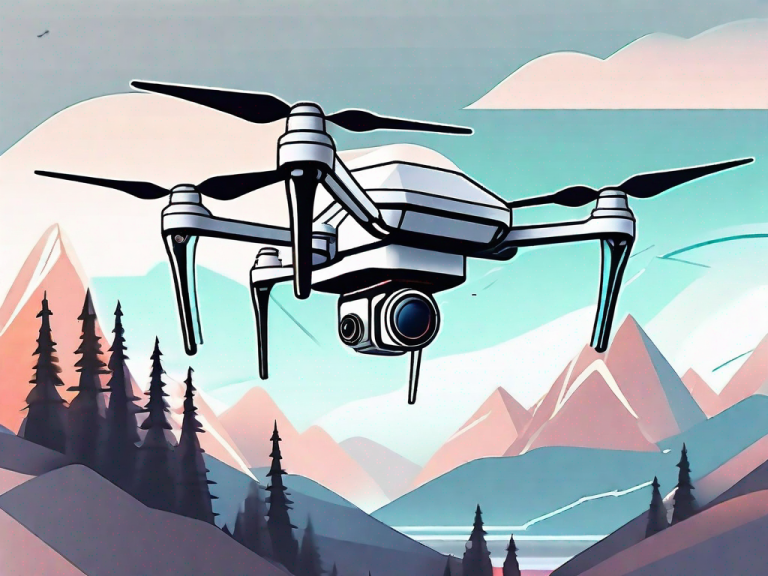Aerial photography is a fascinating art form that allows photographers to capture breathtaking views from above. One of the key aspects of aerial photography is composition, which refers to the arrangement of elements within a photograph. Composition plays a crucial role in determining the visual impact and storytelling of an image. In aerial photography, there are two distinct styles of composition that photographers often explore: abstract compositions and traditional compositions. Understanding the differences between these two styles can help photographers create visually compelling and impactful aerial photographs.
Understanding the Basics of Aerial Photography
Before delving into the differences between abstract and traditional compositions in aerial photography, it’s important to have a solid understanding of the basics of aerial photography. Aerial photography involves capturing images from an elevated position, typically from an aircraft, drone, or other aerial device. This unique perspective provides photographers with an opportunity to capture stunning views of landscapes, urban environments, and other subjects that may not be easily accessible from the ground.
When it comes to composition in aerial photography, photographers need to consider various elements such as lines, shapes, colors, textures, and patterns. These elements can be used to create a visually pleasing and compelling composition that draws the viewer’s eye into the frame.
One important aspect to consider in aerial photography is the use of light. The angle and intensity of light can greatly impact the overall mood and atmosphere of the photograph. Photographers often take advantage of the golden hour, which refers to the period shortly after sunrise or before sunset when the light is soft and warm. This type of lighting can enhance the colors and textures in the image, creating a more captivating composition.
In addition to light, aerial photographers also need to be mindful of the weather conditions. Factors such as cloud cover, wind speed, and visibility can affect the quality of the photographs. Clear skies with minimal haze are ideal for capturing sharp and detailed images, while cloudy or overcast conditions can create a more moody and dramatic effect. It’s important for photographers to plan their aerial shoots accordingly, taking into account the weather forecast and choosing the most suitable conditions for their desired outcome.
Exploring the Concept of Abstract Compositions in Aerial Photography
Abstract compositions in aerial photography involve capturing images that emphasize shapes, lines, colors, or patterns rather than representing recognizable objects or scenes. This style of composition allows photographers to create images that evoke emotions, convey a sense of mystery or intrigue, and encourage viewers to interpret the photograph in their own unique ways.
In abstract aerial compositions, photographers often focus on capturing the play of light and shadow, the interplay between different elements, or the juxtaposition of geometric shapes and patterns. By removing context and focusing on the abstract elements, photographers can create visually striking and thought-provoking images that challenge the viewer’s perception and encourage them to explore beyond the surface.
One of the key techniques used in abstract aerial compositions is the use of aerial perspective. Aerial perspective refers to the way that objects appear to change in color, contrast, and detail as they recede into the distance. By taking advantage of this natural phenomenon, photographers can create depth and dimension in their images, enhancing the abstract qualities of the composition.
Another important aspect of abstract aerial compositions is the use of unconventional angles and viewpoints. Aerial photography allows photographers to capture images from unique perspectives, such as looking straight down or at oblique angles. These unconventional viewpoints can create interesting and unexpected compositions, adding to the abstract nature of the photograph.
Traditional Compositions in Aerial Photography: A Guide for Beginners
While abstract compositions in aerial photography offer a unique and creative approach, traditional compositions provide a more familiar framework that is often easier to understand and appreciate. Traditional compositions follow established principles of visual design, such as the rule of thirds, leading lines, symmetry, and balance, to create visually harmonious and balanced images.
In traditional aerial compositions, photographers aim to capture scenes that are instantly recognizable and convey a clear message or story to the viewer. This style often involves finding visually interesting subjects, framing them using established composition techniques, and considering the overall balance and flow of the image.
One important aspect of traditional compositions in aerial photography is the use of leading lines. Leading lines are elements within the image that guide the viewer’s eye towards the main subject or focal point. These lines can be natural, such as rivers, roads, or shorelines, or they can be man-made, such as fences, pathways, or buildings. By incorporating leading lines into the composition, photographers can create a sense of depth and perspective, as well as draw attention to the main subject of the photograph.
The Art of Capturing Abstract Compositions from Above
Capturing abstract compositions in aerial photography requires a different approach compared to traditional compositions. When photographing from above, photographers can explore the unique perspective provided by the aerial vantage point to create abstract images that are visually compelling and thought-provoking.
One technique commonly used in abstract aerial compositions is to capture the natural patterns and textures found in the environment. From above, landscapes, beaches, and even urban environments can reveal fascinating and intricate patterns that create visually appealing images when captured from the right angle and perspective.
Another approach for capturing abstract compositions is to focus on the interplay of light and shadow. Aerial photography allows photographers to capture unique lighting conditions not often seen from the ground. Shadows cast by buildings, mountains, or other objects can create visually striking contrasts and add depth and dimension to the composition.
Additionally, aerial photography provides the opportunity to capture the dynamic movement and flow of subjects. From above, photographers can capture the motion of waves crashing on a beach, the winding curves of a river, or the bustling activity of a city street. This adds a sense of energy and liveliness to the abstract composition, creating a visually captivating image.
Breaking Down the Elements of Traditional Compositions in Aerial Photography
Traditional compositions in aerial photography revolve around well-established principles of visual design. Understanding these elements and how to utilize them effectively can help photographers create engaging and visually appealing images.
The rule of thirds is a fundamental principle in traditional composition that involves dividing the frame into nine equal parts using two horizontal and two vertical lines. Placing key elements along these lines or at their intersections can create a sense of balance and visual interest in the composition. For example, placing a mountain peak at the intersection of the upper horizontal line and the right vertical line can create a visually pleasing composition.
Leading lines are another important element in traditional aerial compositions. These are lines within the image that lead the viewer’s eye towards the main subject or draw attention to specific areas of interest. In aerial photography, leading lines can take the form of rivers, roads, coastlines, or even man-made structures like bridges or runways.
Symmetry and balance are also essential elements in traditional compositions. Utilizing symmetrical elements, such as perfectly mirrored lakes or perfectly aligned buildings, can create a sense of harmony and evoke a feeling of tranquility.
Another key element in traditional aerial compositions is the use of framing. Framing involves using elements within the scene to create a frame around the main subject, drawing the viewer’s attention to it. This can be achieved by using natural elements like trees or archways, or even man-made structures like windows or doorways.
Contrast is also an important element to consider in aerial photography compositions. Contrast refers to the difference in tones, colors, or textures within an image. By incorporating contrasting elements, such as a brightly colored building against a clear blue sky or a dark forest against a snowy landscape, photographers can create visually striking compositions.









